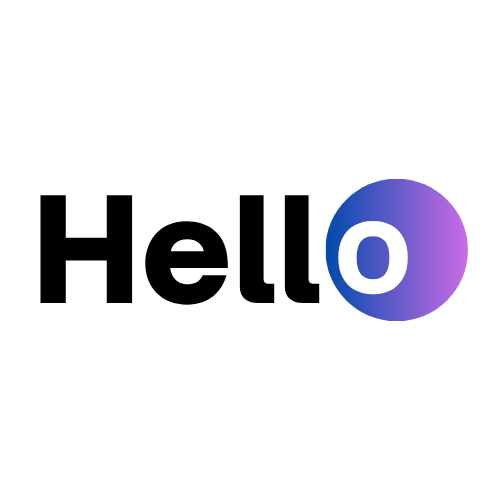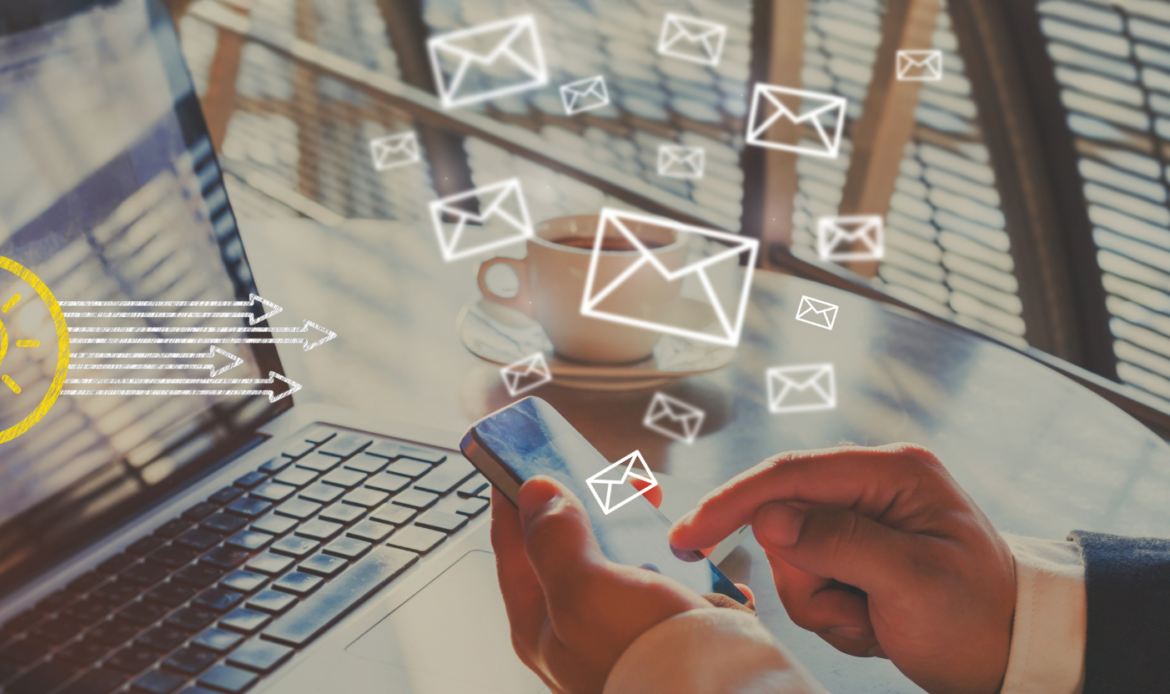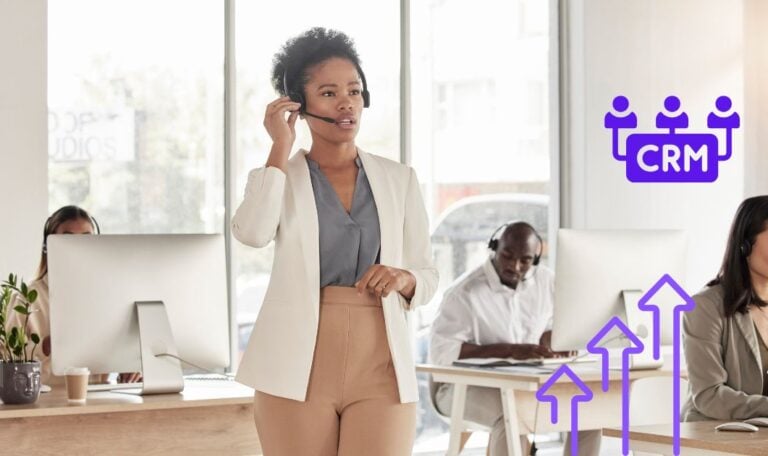Introduction
Email remains one of the most powerful tools in your marketing stack — but only when it’s timely, relevant, and personalized. Gone are the days when batch-and-blast emails could move leads through your funnel.
In 2025, the most effective trigger based email campaigns are powered by CRM data and customer behavior.
Instead of sending one-size-fits-all messages, trigger-based email campaigns allow you to:
- React to a contact’s actions instantly
- Automate highly personalized sequences
- Improve engagement, conversions, and customer experience
- Reduce manual follow-up and repetitive tasks
In this blog, we’ll break down what trigger-based email campaigns are, why they outperform traditional email, how to build them inside a CRM like Hello CRM, and examples of high-performing campaigns you can start today.
What Are Trigger Based Email Campaigns?
Trigger-based emails are automated messages sent in response to specific actions, milestones, or changes in a contact’s profile or behavior.
These triggers can include:
- Submitting a form
- Visiting a certain page
- Not opening a previous email
- Moving to a new deal stage
- Booking (or missing) a meeting
- Completing a purchase
- Becoming inactive for X days
Unlike static email sequences, these campaigns are event-driven, ensuring that messages are sent at the most relevant time — when engagement is highest.
Why Trigger-Based Campaigns Work So Well
✅ Relevance
Messages are tied to a contact’s real-time behavior. No more guessing what they’re thinking — your CRM already knows.
✅ Timing
Automated emails go out immediately, reducing the time between action and response — which is critical for conversions.
✅ Personalization
Because these emails are built from CRM data, they can reference:
- Name, company, location
- Lead score or funnel stage
- Product of interest
- Past behavior (pages visited, emails opened)
✅ Consistency
No follow-up gets missed, no lead goes ignored. Your CRM executes the logic — even when your team is offline.
Common Triggers That Power Smart Email Campaigns
Here are the most commonly used (and highest-performing) triggers inside Hello CRM:
| Trigger Type | Examples | Use Cases |
|---|---|---|
| Behavioral | Email opened, link clicked, page visited | Re-engagement, product interest follow-up |
| Lifecycle | Lead status changed, deal stage updated | Sales nurturing, proposal follow-up |
| Time-based | No activity in X days, trial expiration | Win-back, retention |
| Form-based | Downloaded guide, requested demo | Welcome flows, qualification |
| Transactional | Purchase made, invoice sent | Onboarding, upsell/cross-sell |
These can be combined into multi-step workflows that feel tailor-made for each contact.
Building Trigger-Based Campaigns in Hello CRM (Step-by-Step)
Step 1: Define the Goal
Every email campaign should start with a clear goal. Examples:
- Convert free trial users to paid
- Book more demos
- Re-engage cold leads
- Upsell existing customers
- Prevent churn
The more specific the objective, the better your triggers and message flow will perform.
Step 2: Identify the Trigger Event
Next, decide what action or condition will start the workflow. In Hello CRM, you can trigger emails based on:
- CRM events (e.g., stage moved to “Proposal Sent”)
- Contact activity (e.g., visited pricing page)
- Time delays (e.g., 7 days after signup)
- Custom tags or fields (e.g., “High-intent lead”)
- Third-party integrations (e.g., webinar attended)
This allows hyper-targeted timing and logic.
Step 3: Build the Email Sequence
Now create the emails that will be sent once the trigger is activated.
For best results:
- Use dynamic personalization (Hello CRM fields like {{FirstName}}, {{CompanyName}}, etc.)
- Provide value in each step — not just reminders
- Add clear CTAs that move the lead forward (book a call, view proposal, schedule onboarding)
- Space emails logically (e.g., 1 day, then 3 days, then 7)
Each message should feel like a natural part of the buyer journey.
Step 4: Add Conditions and Branches
Advanced workflows can include:
- Conditional splits — “If clicked email → send follow-up A. If not → send B”
- Goal completion logic — Exit the sequence once the lead takes the desired action
- Fallbacks — Send reminders only if there’s no reply
In Hello CRM, you can drag and drop these rules to customize each step — no coding required.
Step 5: Monitor Performance and Optimize
Don’t just “set and forget.” Review reports in Hello CRM to track:
- Open and click-through rates
- Conversion rate by trigger
- Drop-off points in the sequence
- Reply and meeting booking rates
Use A/B testing to try different subject lines, CTA formats, or send times — and continuously improve.
High-Impact Trigger-Based Email Campaign Examples
1. Welcome Series (Trigger: New Signup or Lead Captured)
Flow:
- Email 1: Welcome + what to expect
- Email 2: Product overview or video demo
- Email 3: Feature highlight or quick win
- Email 4: Invite to live demo or support session
Why it works: Sets the tone early, builds trust, and educates fast.
2. Trial to Paid Conversion (Trigger: Free trial started)
Flow:
- Email 1: Welcome and setup guide
- Email 2: Workflow templates or quick setup checklist
- Email 3: Case study from similar user
- Email 4: “Need help?” call link
- Email 5: Last chance to convert with incentive
Why it works: Leads don’t always convert on their own — automation guides them step by step.
3. Proposal Follow-Up (Trigger: Deal stage = “Proposal Sent”)
Flow:
- Email 1: “Let me know if you have questions”
- Email 2: FAQ or case study
- Email 3: Soft CTA (“Want to revisit options?”)
- Email 4: Break-up message if no response
Why it works: Maintains momentum and closes loops without chasing manually.
4. Re-Engagement (Trigger: No activity in 30 days)
Flow:
- Email 1: “Still interested?”
- Email 2: Share new features or success stories
- Email 3: “Want to pause messages?” or opt-down link
Why it works: Reawakens dormant leads and keeps your list clean.
5. Upsell/Cross-Sell (Trigger: Purchase completed or deal closed)
Flow:
- Email 1: Thank you + onboarding
- Email 2: “Other tools our users love…”
- Email 3: Case study on full suite
- Email 4: Book a success call
Why it works: Your best future customers are current ones — this builds LTV.
Best Practices for Smarter Email Automation
- Don’t over-trigger: Avoid sending too many emails at once. Space out messaging and respect inbox fatigue.
- Use smart delays: Add “Wait until X time” logic so you don’t send emails at 2 AM.
- Test, then scale: Start with one journey, measure results, then build more.
- Always offer an opt-out: Stay compliant and respectful.
- Keep it human: Even automated messages should sound conversational, not robotic.
How Hello CRM Makes Trigger-Based Campaigns Easy
Hello CRM was built for smart, event-based automation — so you can turn every interaction into a personalized journey.
With Hello CRM, you can:
- Create trigger workflows visually — no code needed
- Combine email with SMS, voice, and WhatsApp in one journey
- Personalize messages with CRM fields
- Build condition logic (“If opened + no reply”)
- Route leads to reps automatically based on engagement
- Monitor real-time performance and AI recommendations
Whether you’re nurturing new leads or reactivating old ones, Hello CRM helps you do it smarter — not harder.
Final Thoughts
Trigger-based email campaigns are no longer optional. They’re the foundation of modern, personalized marketing that scales.
When you align automation with customer behavior — and power it with rich CRM data — every message becomes more relevant, more timely, and more effective.
Start small. Choose one key trigger. Build a simple flow. Watch your open, reply, and conversion rates climb.
Then keep building.
Ready to put your email on autopilot — without losing the human touch?
Try Hello CRM for free or book a live demo to see how trigger-based campaigns can unlock your next stage of growth.





